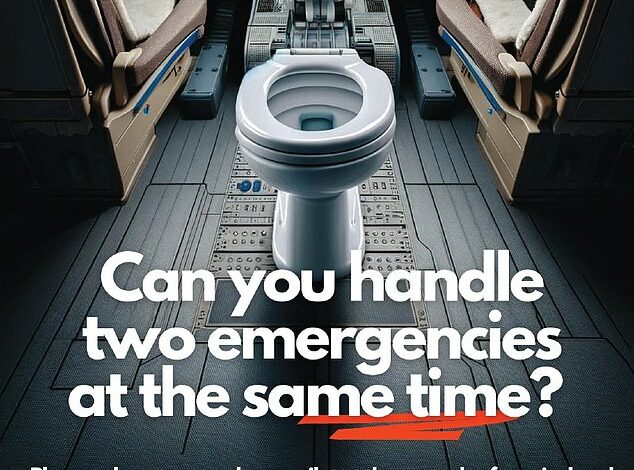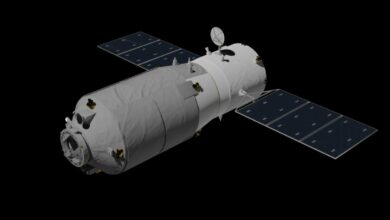Would YOU be happy to fly in a plane with just one pilot at the controls? Pilots’ union launches campaign to warn against Airbus’ attempt to replace humans in the cockpit with automation

Would you feel comfortable flying a passenger plane with only one pilot at the controls?
Aircraft manufacturers and airlines hope that passengers will be excited by the idea, as they look to usher in a new era of flying where airlines have only one pilot in the cockpit during the cruise phase of the flight.
Passengers aren’t thrilled with the idea, and neither is the pilot community, with the European Cockpit Association raising awareness of the push for single-seat flight decks through a new advertising campaign.
Between July 20 and 27, advertisements will appear at Brussels-Zaventem airport in Belgium warning passengers that reducing the number of pilots in the cockpit after take-off poses a safety risk. In effect, flights will be flown without pilots.
The posters are part of the ‘OneMeansNone‘ campaign, which warns passengers that ‘flying with only one pilot is the same as flying on a flight without a pilot’.

The European Cockpit Association is spreading awareness of the push for single-pilot flight decks through a new advertising campaign
The ECA continues: ‘Aircraft, especially large commercial ones, require multiple pilots to fly safely. Flight safety depends on a team of pilots sharing tasks and working together.
‘Their roles include flying the aircraft, monitoring the flight, managing automation and addressing risk in a complex and changing environment. If a pilot becomes incapacitated or unwell, there is no one else in the cockpit to quickly take over. Reduced Crew Operations (RCO) are a gamble with your safety.’
It says: ‘Airlines are looking to replace pilots with automation to reduce labor costs and potentially increase profits.’
Captain Otjan de Bruijn, Chairman of the ECA, said: ‘We hope this campaign will start a conversation and show in a visual way why we need a minimum of two pilots in the cockpit.
‘Given the prospect of reduced crew capacity, both pilots and passengers naturally opt for safety.
“An airplane has multiple backups – two engines, two generators – for a reason. One pilot is simply not enough to handle emergencies and make sure all aspects of the flight are OK.
“We must not allow the commercial interests of airlines to stand in the way of passenger safety.”

Captain Otjan de Bruijn, ECA President, said: ‘An aircraft has multiple backups – two engines, two generators – for a reason. One pilot is simply not enough to handle emergencies and ensure all aspects of flight are in order.’ Above – stock photo
Who advocates single-pilot flights?
Cathay Pacific, Singapore Airlines and Qatar Airways have all shown interest, but due to low passenger acceptance and engagement, they are not shouting it from the rooftops.
The biggest boost comes from the manufacturers Airbus and Dassault.
The ECA says: ‘Currently, regulations and industry standards require two pilots at the controls of a large commercial aircraft.
However, manufacturers such as Airbus and Dassault are actively pursuing the goal of eliminating one pilot from the cockpit during the cruise phase.
‘This proposal, also known as “extended Minimum Crew Operations” (eMCO), is being evaluated by the European Aviation Safety Agency (EASA). Its approval would lead to a significant reduction in flight safety, with one pilot leaving the flight deck for several hours during the cruise phase, while the other remains at the controls.’
Airbus claims that having one pilot in the cockpit means more peace for the pilots and smoother flight operations.
There stands that: ‘Extended minimum crew complement enables the crew to better organize their presence in the cockpit during the cruise phase, thanks to additional automated functions. Pilots can thus achieve a better balance between work and rest time on long-haul flights.’
Airbus is keen to promote eMCO for the A350. Christophe Cail, operational advisor to the chief product safety officer and test pilot at Airbus, told Aviation News that it is “the only platform that enables this technology. There is no other aircraft that can support this evolution.”




